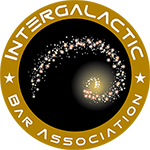September 1: Low in the west-southwestern sky Venus will be situated only a finger’s width to the lower left of the bright naked-eye star Spica in Virgo. Visible in binoculars or telescope
September 2: Last Quarter Moon
September 2: Mercury at perihelion
September 2: Aldebaran passes the moon
September 5: Venus at aphelion
September 6: Mercury meets Regulus
September 6 evening: Saturn stationary near two Messier objects
September 7 overnight: Neptune at opposition
September 8 pre-dawn: Morning zodiacal light for Mid-Northern observers
September 9: New Moon
September 9: Piscid Meteor Shower
September 9: SpaceX Falcon 9 rocket will be launching the Telstar 18 Vantage (Apstar 5C) communications satellite from Cape Canaveral Air Force Station
September 10: Comet 21P will be closest to Earth and will be at its brightest form before dawn. Must use either binoculars or telescope.
September 10: Japan launches its H-2B rocket from the Tanegashima Space Center. Will deliver supplies to the International Space Station
September 11: Moon at perihelion
September 12 evening: Young Moon passes Venus
September 12: NASA to conduct final test of Orion spacecraft’s parachute system at Yuma Proving Ground in AZ.
September 13 evening: Jupiter near the Young Moon
September 14: Japan’s H-II Transfer Vehicle (HTV-7) will arrive at the International Space Station after a 3.5 day flight. NASA TV live coverage starting at 6am EDT
September 15: United Launch Alliance Delta 2 rocket will launch NASA’s ICE Sat-2 to measure ice sheet elevation and ice sheet thickness changes linked to climate change along with measurements of Earth’s vegetation biomass
September 16: First Quarter Moon
September 16: India to launch Nova SAR-S and SSTL-S1 Earth observation satellites and several secondary payloads from the Satish Dhawan Space Center
September 17 evening: Moon meets Saturn
September 17: Conjunction of the moon and Saturn
September 19: Mars and Moon meet
September 19: Moon at apogee
September 20: Spacewalk – two NASA Astronauts – installation of new batteries in the International Space Station’s P4 Truss 4A power channel.
September 20: Conjunction of the moon and Mars.
September 21 evening: Venus is at its brightest
September 21: Piscid Meteor Shower
September 22/23: Fall Equinox
September 24/25: Full Harvest Moon
September 26:Two NASA astronauts will take the second of two spacewalks in less than one week to install new batteries in the International Space Station’s P4 Truss 2A power channel. The spacewalk will last approximately 6.5 hours
September 29 overnight: Aldebaran buzzes the Moon again
September 30: Algol at minimum brightness
